Featured image credit: SpaceX
Lift Off Time | November 23, 2022 – 02:57 UTC November 22, 2022 – 21:57 EST |
|---|---|
Mission Name | Eutelsat 10B, a communication satellite |
Launch Provider | SpaceX |
Customer | Eutelsat |
Rocket | Falcon 9 Block 5, B1049-11; 434.96 day turnaround time |
Launch Location | Space Launch Complex 40 (SLC-40), Cape Canaveral Space Force Station, Florida, USA |
Payload mass | ~5,500 kg (~12,000 lb) launch mass |
Where did the satellites go? | Geostationary Earth Orbit (GEO) at 10º East (Initial orbit: super-synchronous Geostationary Transfer Orbit: 59,831 x 261 km at 22.78 degrees) |
Did they attempt to recover the first stage? | No |
Where did the first stage land? | The booster will splash down in the Atlantic Ocean |
Did they attempt to recover the fairings? | The fairing halves were recovered ~992 km downrange by Doug |
Were these fairings new? | TBD |
This was the: | – 1st Falcon 9 Block 5 launch with a white interstage – 186th Falcon 9 launch – 123rd Falcon 9 flight with a flight-proven booster – 127th re-flight of a booster – 49th re-flight of a booster in 2022 – 53rd launch for SpaceX in 2022 (a record) – 104th SpaceX launch from SLC-40 – 162nd orbital launch attempt of 2022 |
Where to watch | Official Replay |
How Did It All Go?
SpaceX successfully launched the Eutelsat 10B satellite into a Geostationary Transfer Orbit (GTO) for Eutelsat atop its Falcon 9 Block 5. The vehicle lifted off from Space Launch Complex 40 (SLC-40) at the Cape Canaveral Space Force Station, in Florida, USA. The second stage of Falcon 9 placed the Eutelsat 10B satellite into a super-synchronous GTO, which means that its apogee with be above the GEO belt (35,786 km). This allows for the spacecraft to burn less on-board fuel to raise its orbit to the GEO belt since less delta-V is needed; the amount of dV needed to take a spacecraft from its GTO to GEO is given in the GTO number: for example, on this mission, the satellites were placed into GTO-1589, which means it needs 1,589 m/s of dV to reach GEO.
For this reason, the Falcon 9 first stage was expended on this mission. The first stage booster, B1049, donated its interstage to B1052 (which was converted from a Falcon Heavy minus-Y side core to a Falcon 9) since 49’s last flight. Missing an interstage, SpaceX decided to put an old Falcon 9 v1.2 Full Thrust non-operational block 5 interstage on the booster, which is white. For this reason, this will be the first (and possibly only) Falcon 9 Block 5 launch with a white interstage.
An interesting note is that the interstage mounting hardware was changed between older block 5 boosters (boosters before B1056) and newer block 5 boosters. The newer interstage design features fewer pins holding the interstage on, reducing the amount of work needed to convert a Falcon 9 to a Falcon Heavy side booster.

On top of this, due to the booster being expended, its grid fins, landing legs, and RCS thrusters have been removed.
What Is Eutelsat 10B?
As the name implies, Eutelsat 10B is a replacement for the Eutelsat 10A satellite in the 10-degree East slot. Eutelsat 10A, which is set to reach its end of life at the end of 2023, currently provides communication services to maritime and air traffic throughout both the Americas and parts of Asia.
With a launch mass of ~4,500 kg, Eutelsat 10B will carry along two pairs of secondary high-throughput satellites (HTS), that will extend the reach of the main satellite. Each of these payloads has 35 Gigabits per second of bandwidth; one will be placed above the North Atlantic corridor, Europe, the Mediterranean basin, and the Middle East, while the other one will be placed to extend service through the Atlantic Ocean, Africa, and the Indian ocean.
The main satellite is based on the Spacebus-Neo-200 satellite bus and will be equipped with 36 Ku-band transponders and 20 C-band transponders. The satellite is all-electric, using plasma thrusters to control the payload once in orbit. The propulsion system–along with the rest of the satellite–is powered by two large deployable solar arrays and batteries to power the satellite throughout the orbital night.

What Is Falcon 9 Block 5?
The Falcon 9 Block 5 is SpaceX’s partially reusable two-stage medium-lift launch vehicle. The vehicle consists of a reusable first stage, an expendable second stage, and, when in payload configuration, a pair of reusable fairing halves.
First Stage
The Falcon 9 first stage contains 9 Merlin 1D+ sea level engines. Each engine uses an open gas generator cycle and runs on RP-1 and liquid oxygen (LOx). Each engine produces 845 kN of thrust at sea level, with a specific impulse (ISP) of 285 seconds, and 934 kN in a vacuum with an ISP of 313 seconds. Due to the powerful nature of the engine, and the large amount of them, the Falcon 9 first stage is able to lose an engine right off the pad, or up to two later in flight, and be able to successfully place the payload into orbit.
The Merlin engines are ignited by triethylaluminum and triethylborane (TEA-TEB), which instantaneously burst into flames when mixed in the presence of oxygen. During static fire and launch the TEA-TEB is provided by the ground service equipment. However, as the Falcon 9 first stage is able to propulsively land, three of the Merlin engines (E1, E5, and E9) contain TEA-TEB canisters to relight for the boost back, reentry, and landing burns.
Second Stage
The Falcon 9 second stage is the only expendable part of the Falcon 9. It contains a singular MVacD engine that produces 992 kN of thrust and an ISP of 348 seconds. The second stage is capable of doing several burns, allowing the Falcon 9 to put payloads in several different orbits.
For missions with many burns and/or long coasts between burns, the second stage is able to be equipped with a mission extension package. When the second stage has this package it has a grey strip, which helps keep the RP-1 warm, an increased number of composite-overwrapped pressure vessels (COPVs) for pressurization control, and additional TEA-TEB.
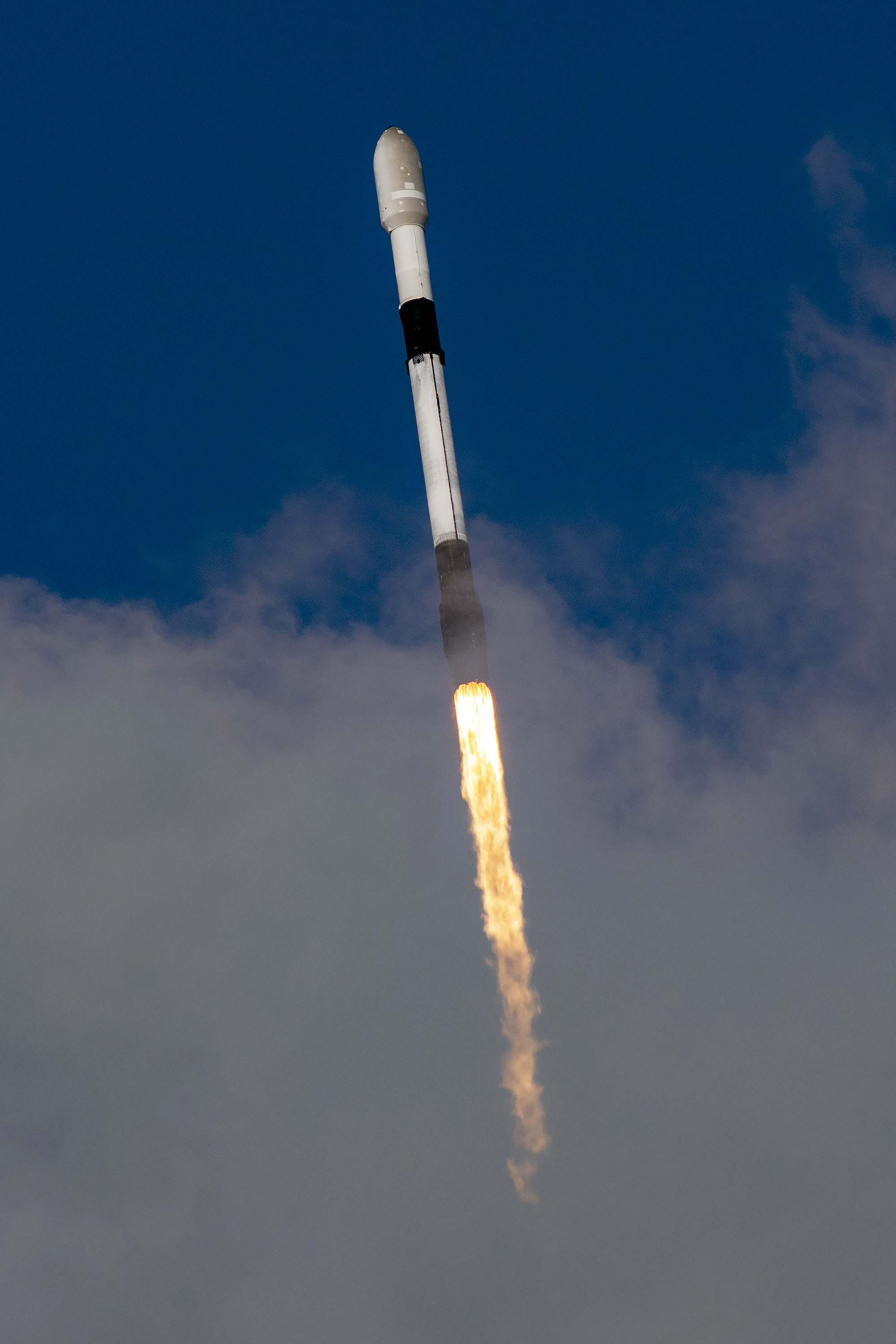
Falcon 9 Booster
The booster supporting the Eutelsat 10B mission was B1049, which had supported ten previous flights. Hence, its designation for this mission was B1049-11.
| B1049’s missions | Launch Date (UTC) | Turn Around Time (Days) |
| Telstar 18V | September 10, 2018 04:45 | N/A |
| Iridium NEXT-8 | January 11, 2019 15:31 | 123.45 |
| Starlink V0.9 L1 | May 24, 2019 02:30 | 132.46 |
| Starlink V1.0 L2 | January 7, 2020 02:19 | 227.99 |
| Starlink V1.0 L7 | June 4, 2020 01:25 | 148.96 |
| Starlink V1.0 L10 | August 18, 2020 14:31 | 75.55 |
| Starlink V1.0 L15 | November 25, 2020 02:13 | 98.49 |
| Starlink V1.0 L17 | March 4, 2021 08:24 | 99.26 |
| Starlink V1.0 L25 | May 4, 2021 19:05 | 61.44 |
| Starlink Group 2-1 | September 14, 2021 03:55 | 132.37 |
| Eutelsat 10B | November 23, 2022 02:57 | 434.96 |
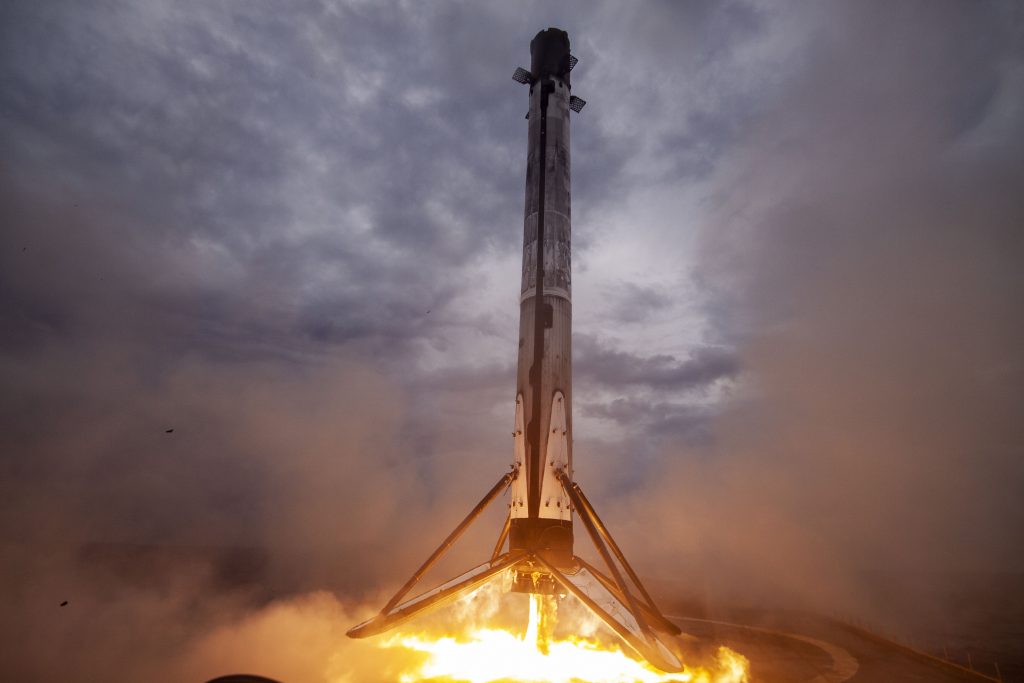
Falcon 9 Fairings
The Falcon 9’s fairing consists of two dissimilar reusable halves. The first half (the half that faces away from the transport erector) is called the active half, and houses the pneumatics for the separation system. The other fairing half is called the passive half. As the name implies, this half plays a purely passive role in the fairing separation process, as it relies on the pneumatics from the active half.
Both fairing halves are equipped with cold gas thrusters and a parafoil which are used to softly touch down the fairing half in the ocean. SpaceX used to attempt to catch the fairing halves, however, at the end of 2020 this program was canceled due to safety risks and a low success rate. On Eutelsat 10B, SpaceX attempted to recover the fairing halves from the water with their recovery vessel Doug.
In 2021, SpaceX started flying a new version of the Falcon 9 fairing. The new “upgraded” version has vents only at the top of each fairing half, by the gap between the halves, whereas the old version had vents placed spread equidistantly around the base of the fairing. Moving the vents decreases the chance of water getting into the fairing, making the chance of a successful scoop significantly higher.
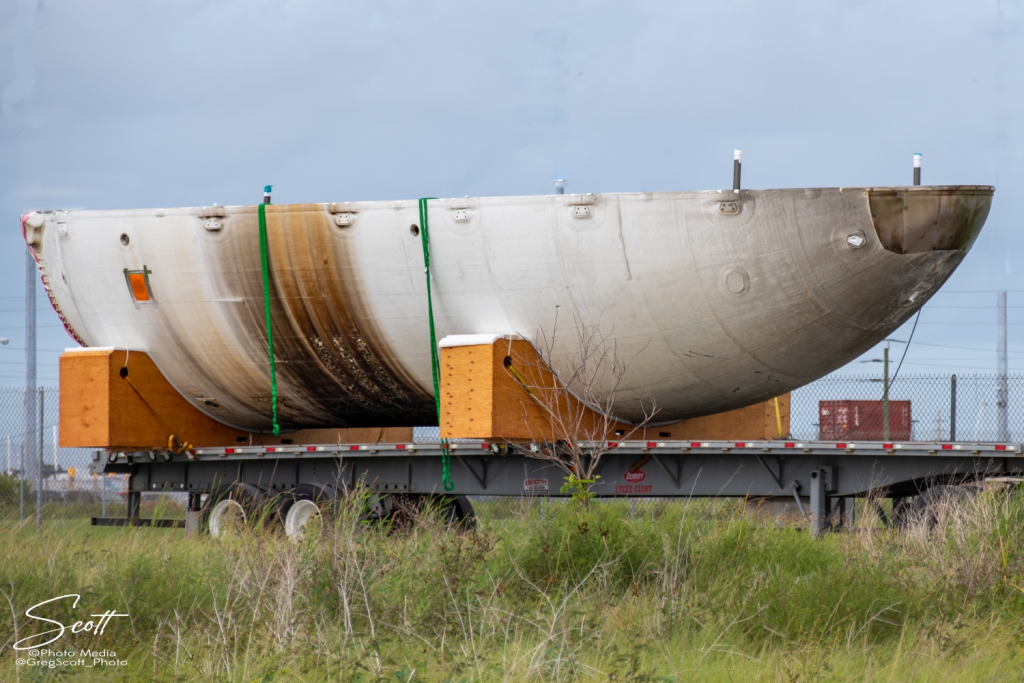
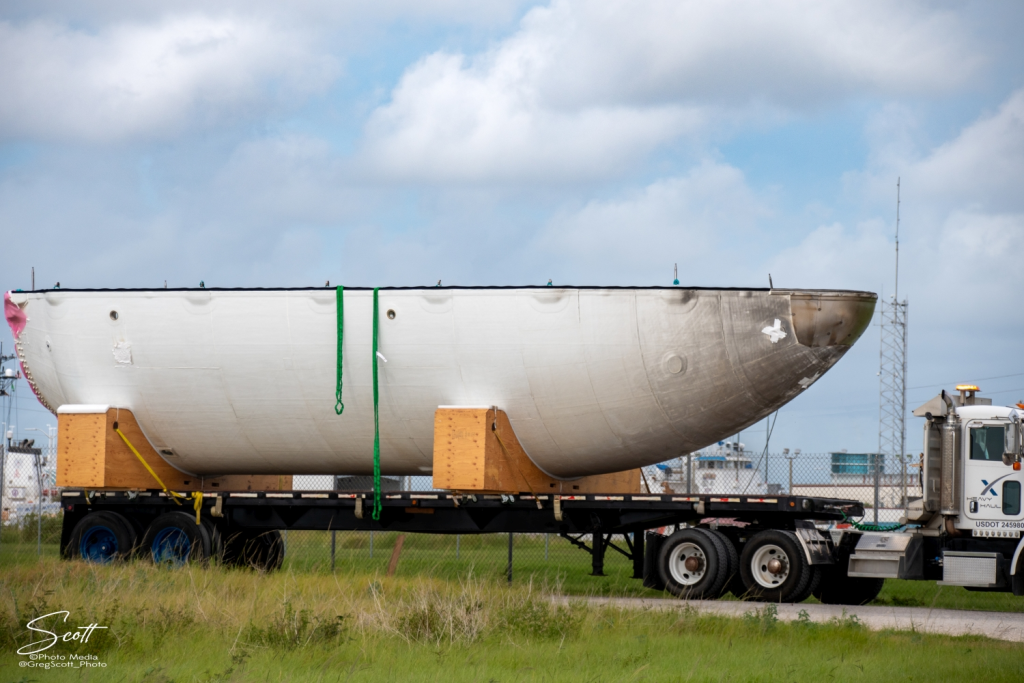

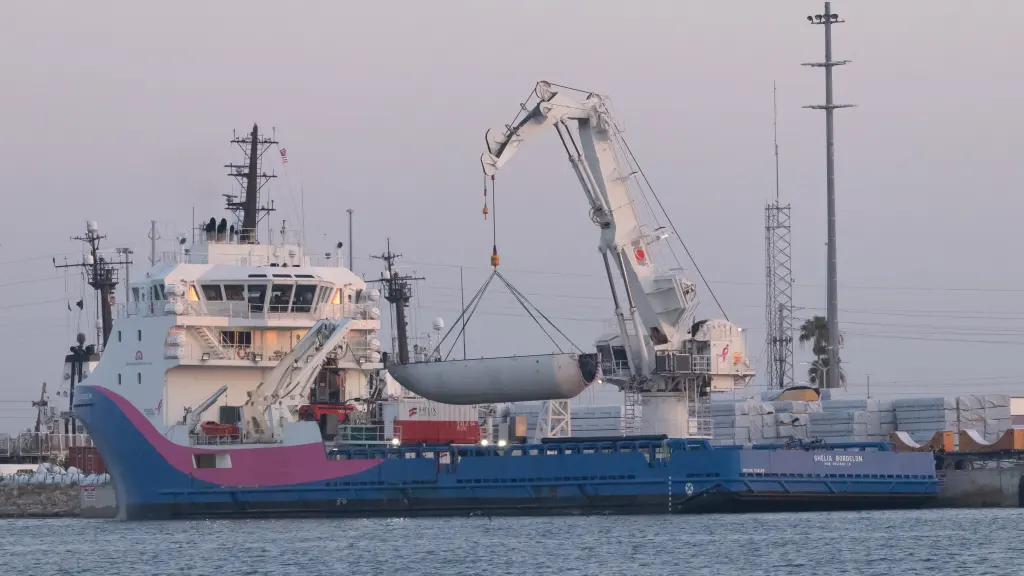
Eutelsat 10B Countdown
All times are approximate
| HR/MIN/SEC | EVENT |
|---|---|
| 00:38:00 | SpaceX Launch Director verifies go for propellant load |
| 00:35:00 | RP-1 (rocket grade kerosene) loading underway |
| 00:35:00 | 1st stage LOX (liquid oxygen) loading underway |
| 00:16:00 | 2nd stage LOX loading underway |
| 00:07:00 | Falcon 9 begins engine chill prior to launch |
| 00:01:00 | Command flight computer to begin final prelaunch checks |
| 00:01:00 | Propellant tank pressurization to flight pressure begins |
| 00:00:45 | SpaceX Launch Director verifies go for launch |
| 00:00:03 | Engine controller commands engine ignition sequence to start |
| 00:00:00 | Falcon 9 liftoff |
Launch and Deployment
All times are approximate
| Hr/Min/Sec | Event |
|---|---|
| 00:01:16 | Max Q (moment of peak mechanical stress on the rocket) |
| 00:02:43 | 1st stage main engine cutoff (MECO) |
| 00:02:47 | 1st and 2nd stages separate |
| 00:02:54 | 2nd stage engine starts (SES-1) |
| 00:03:36 | Fairing deployment |
| 00:08:05 | 2nd stage engine cutoff (SECO) |
| 00:26:18 | 2nd stage engine restarts (SES-2) |
| 00:27:27 | 2nd stage engine cutoff (SECO-2) |
| 00:35:28 | Eutelsat 10B deploys |






A side note – The turnaround time of 435 days for booster B1049 is the longest time between two Falcon 9 launches for a single booster. B1052 had a longer time between two launches although one was as a side booster of a Falcon Heavy and the other one a Falcon 9.